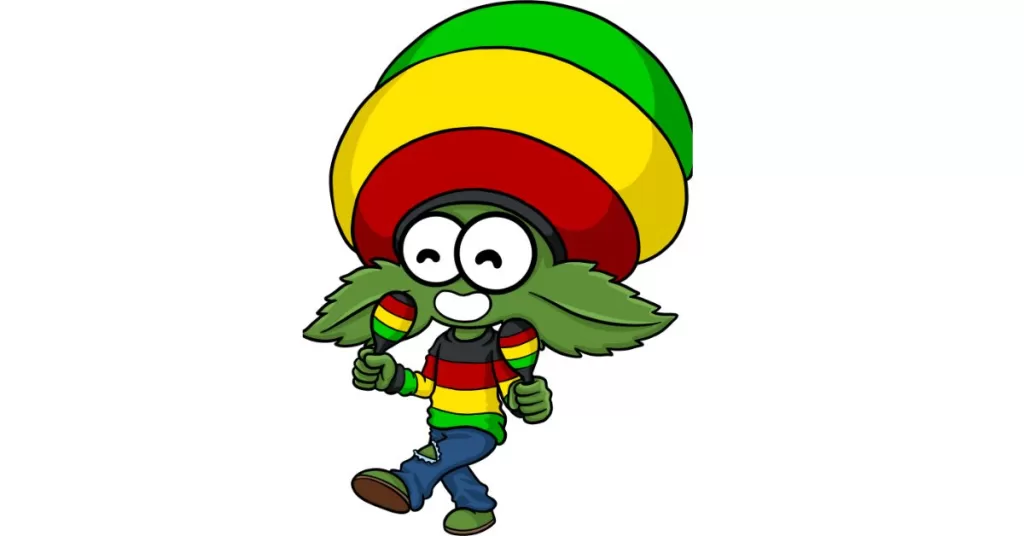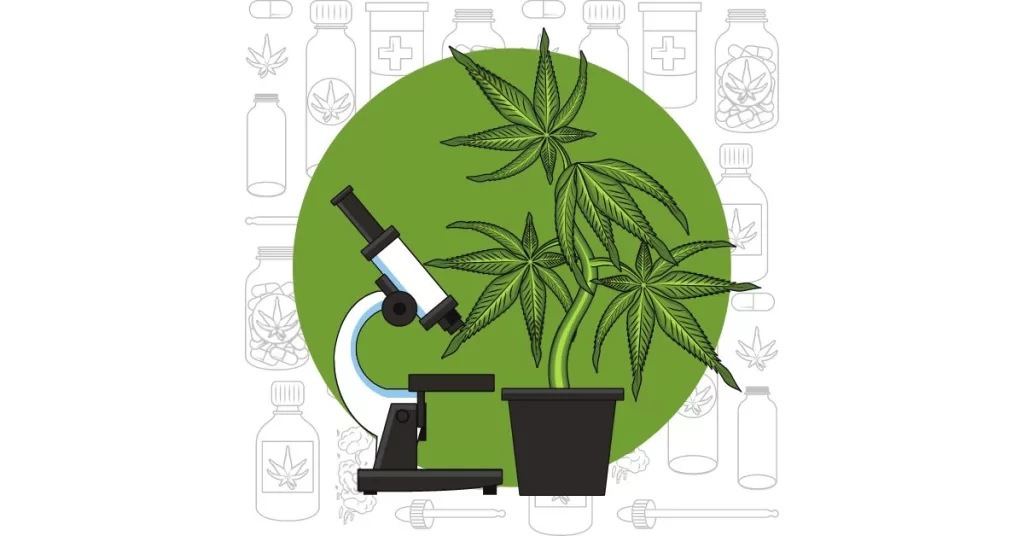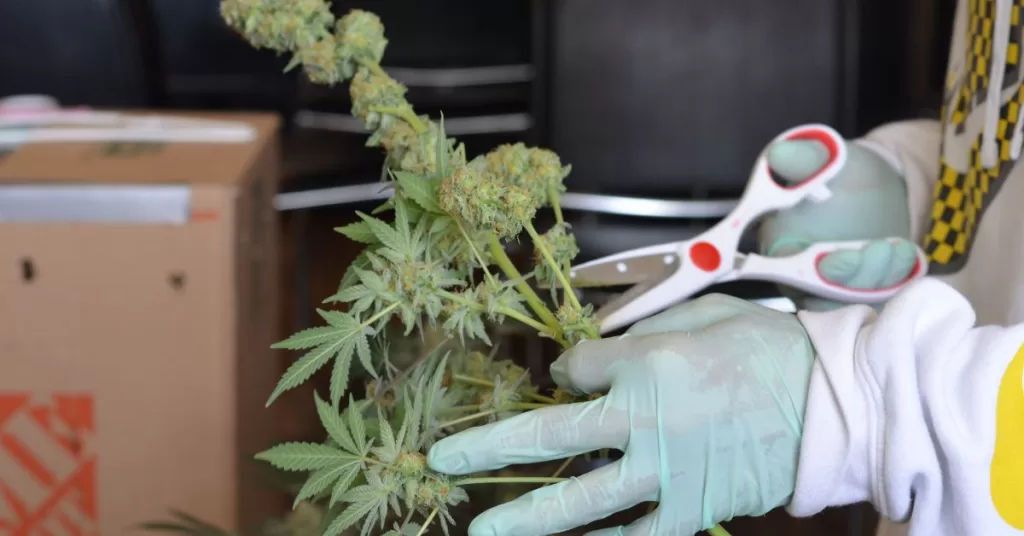Harvesting marijuana is cutting down your marijuana plants, removing the buds, and preparing them for consumption or sale.
Knowing when to harvest marijuana ensures you get the best quality and yield of your marijuana plants.
Table of Contents
Why It’s Important to Harvest Marijuana at the Right Time
The timing of the harvest directly impacts the concentration of cannabinoids, such as THC and CBD, as well as the terpene profile, which determines the aroma and flavor of the buds.
Here are several key reasons why it is important to harvest marijuana at the right time:
Potency and Cannabinoid Levels

The primary reason for cultivating marijuana is to obtain the desired levels of THC, CBD, and other cannabinoids. These compounds are responsible for the psychoactive and therapeutic effects of cannabis.
Harvesting marijuana too early can result in lower levels of cannabinoids, leading to a weaker and less potent product. On the other hand, harvesting too late can cause a decline in THC levels and an increase in CBN (cannabinol), resulting in a sedative effect.
When growers harvest marijuana at the optimal time, their cannabis contains the desired cannabinoid levels.
Terpene Profile

Terpenes are aromatic compounds in cannabis that contribute to its unique fragrance and flavor. These compounds enhance the sensory experience and have potential therapeutic benefits.
The terpene profile of marijuana is most prominent during the flowering stage, and it can change as the plant matures. When you harvest marijuana at the right time, it captures the full spectrum of terpenes, ensuring a rich and flavorful end product.
Terpenes are delicate and can degrade if the plant is left to over-mature, resulting in a loss of aroma and taste.
Yield Optimization

Harvesting marijuana at the right time can also impact the overall yield of the cannabis crop. Waiting too long to harvest can lead to the degradation of trichomes containing the highest cannabinoids and terpenes.
Trichomes can become brittle or begin to degrade if left for too long, resulting in a loss of resin and decreased yields.
On the other hand, harvesting too early may result in smaller buds and lower overall yields. By timing to harvest marijuana correctly, growers can maximize their yield potential.
Physical Appearance

The visual appearance of the buds is an important factor for many consumers. Harvesting at the right time allows growers to achieve the desired visual characteristics of the buds.
The trichomes, which appear as tiny, crystal-like structures on the surface of the flowers, change as the plant matures.
Growers can determine the ideal time to harvest marijuana by observing the trichomes under a magnifying tool, such as a jeweler’s loupe or a microscope. Harvesting at the right time ensures the buds have the desired size, density, and color, making them visually appealing to consumers.
Optimal Drying and Curing
After harvest, the buds must be properly dried and cured to remove excess moisture and enhance the smoke or vapor’s flavor, aroma, and smoothness.
Harvesting at the right time sets the stage for successful drying and curing. If the plant is harvested too early, it may contain excess moisture, leading to difficulties in drying and potentially causing mold or mildew.
Conversely, if the plant is over-matured, it may become too dry and lose its desirable characteristics. By harvesting at the optimal time, growers can ensure a smooth and efficient post-harvest process.
Understanding the Stages of Marijuana Growth
To determine when to harvest marijuana plants, you need to understand the various stages of marijuana growth. Marijuana plants go through four main stages of growth: the seedling stage, the vegetative stage, the flowering stage, and the harvesting stage.
In the seedling stage, your marijuana plants will grow their first leaves, and their root systems will begin to develop.
The vegetative stage is when marijuana plants grow their stems, leaves, and branches. Depending on the strain and growing conditions, this stage typically lasts four to eight weeks.
The flowering stage is when your marijuana plants will start to produce buds. Depending on the strain and growing conditions, this stage typically lasts between eight and twelve weeks.
Lastly, the harvesting stage is when you will cut down your marijuana plants, remove the buds, and prepare them for consumption or sale.
Factors That Affect When to Harvest MARIJUANA
Several factors affect when to harvest marijuana plants, including strain, growing conditions, and the desired effects.
Different strains of marijuana have different flowering times, ranging from six weeks to as long as fourteen weeks.
Growing conditions such as temperature, humidity, and light can also affect when to harvest your marijuana plants.
For example, if your marijuana plants are grown in a humid environment, they may take longer to dry, and you may need to harvest them earlier. Similarly, if your marijuana plants are grown in a cooler environment, they may take longer to mature, and you may need to harvest them later.
Lastly, the desired effects of your marijuana buds can also affect when to harvest. If you want a more energetic and uplifting high, you may want to harvest your marijuana plants earlier. If you want a more relaxing and sedative high, you may want to harvest your marijuana plants later.
Signs to know when to harvest marijuana

To determine when to harvest marijuana plants, you must look for signs that your plants are ready. Here are some of the signs that your marijuana plants are ready to harvest:
Trichome Color
The trichomes, tiny resinous glands on the surface of the buds, are a reliable indicator of harvest readiness. Initially, they appear transparent, but as the plant matures, they change color.
Look for milky white or cloudy trichomes, indicating peak THC levels. If you desire a more relaxing effect, wait until some trichomes have turned amber or darker.
Pistil Color
Another visual clue is the pistils’ color and hair-like structures on the buds. During the flowering stage, pistils are usually white and stick straight out.
As the plant matures, the pistils change color. If most pistils have turned dark, such as orange, red, or brown, it is a sign that the plant is nearing harvest.
However, relying solely on pistil color is not recommended, as it may vary between strains.
Buds Swelling
Pay attention to the size and density of the buds. As harvest approaches, the buds should swell and become denser.
This indicates that the plant is allocating more resources to bud development, and they are reaching their maximum potential. Mature buds will feel firm to the touch and have a plump appearance.
Aroma Intensity
The smell of the buds can also provide valuable information about their readiness. Throughout the flowering stage, marijuana plants emit a range of aromas. As the plant nears harvest, the aroma becomes more pungent and pronounced. Take note of any changes in scent and evaluate if it aligns with the desired fragrance profile of the strain you’re growing.
Leaf Yellowing
Towards the end of the flowering stage, you may observe the plant’s fan leaves turning yellow and dying off.
This is a natural process as the plant redirects its energy from foliage to the buds. However, this sign alone is insufficient to determine harvest readiness, as it can also be influenced by factors such as nutrient deficiencies or other environmental stressors.
Overall Plant Health
Before you harvest marijuana, ensure your plant is healthy and free from pests, diseases, or issues. Conduct a thorough inspection and address any problems beforehand to avoid contaminating your final product.
Methods for Determining When to Harvest MARIJUANA
There are several methods for determining when to harvest marijuana plants, including the pistil, trichome, and flush methods.
The pistil method involves looking at the pistils on your marijuana buds. When the pistils start to turn brown or orange, it is a sign that your plants are reaching maturity. This method is not always reliable, as some strains of marijuana have pistils that turn brown or orange early in the flowering stage.
The trichome method involves looking at the trichomes on your marijuana buds. When the trichomes turn cloudy, it is a sign that your plants are reaching maturity. This method is more reliable than the pistil method, as trichomes are a more accurate indicator of maturity.
The flush method involves flushing your marijuana plants with water before harvesting them. This method removes any excess nutrients from your plants, which can affect the taste and potency of your buds.
Harvesting and Curing Your Marijuana Plants

Once you have determined that your marijuana plants are ready to harvest, it is time to cut them down and prepare them for consumption or sale.
Here are the steps for harvesting and curing your marijuana plants:
Cut down your marijuana plants: Use sharp scissors or pruning shears to cut down your marijuana plants. Cut the stems close to the base of the plant.
Remove the buds: Use your fingers or scissors to remove the buds from the stems.
Dry the buds: Hang your buds upside down in a cool, dark, and dry place for at least five days. Make sure that there is plenty of airflow around your buds.
Cure the buds: Once dry, place them in an airtight container and store them in a cool, dark, and dry place for at least two weeks. This will help improve your buds’ flavor, aroma, and potency.
Common Mistakes to Avoid During Harvesting MARIJUANA
Knowing when to harvest marijuana plants can be a tricky process, and there are several common mistakes that you need to avoid. Here are some of the most common mistakes to avoid:
Harvesting too early or too late: Harvesting your marijuana plants too early or too late can significantly affect your buds’ potency, flavor, and aroma.
Not flushing your plants: Failing to flush your marijuana plants before harvesting them can leave behind excess nutrients, affecting the taste and potency of your buds.
Not drying your buds properly: Failing to dry your buds properly can lead to mold, mildew, and other pests that can damage your marijuana plants.
Not curing your buds properly: Failing to cure your buds properly can lead to a harsh taste and a loss of potency.
Frequently Asked Questions About WHEN TO Harvest Marijuana Plants
How long does it take to harvest marijuana plants?
The time it takes to harvest marijuana plants depends on the strain and growing conditions. Most strains of marijuana take between eight and twelve weeks to reach maturity.
How do I know when to harvest marijuana?
You can determine when your marijuana plants are ready to harvest by looking for signs such as brown or orange pistils, cloudy trichomes, dense buds, and yellowing leaves.
What is the best way to dry and cure my marijuana buds?
The best way to dry and cure your marijuana buds is to hang them upside down in a cool, dark, dry place for at least five days.
Once your buds are dry, place them in an airtight container and store them in a cool, dark, and dry place for at least two weeks.
Conclusion and Final Thoughts on WHEN TO Harvest Marijuana
Knowing when to harvest marijuana plants can be tricky, but with the right knowledge and techniques, you can ensure you get the best quality and yield of your marijuana buds.
Understanding the various stages of marijuana growth, factors that affect when to harvest, and signs that your marijuana plants are ready to harvest is essential for any professional in the marijuana industry.
By avoiding common mistakes and following best practices for harvesting and curing your marijuana plants, you can ensure that your buds are of the highest quality and potency.
For any questions, feel free to comment below.
